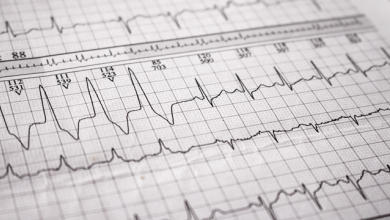Search results
Author(s):
Saad Fyyaz
,
Michael Papadakis
Added:
1 year ago
Author(s):
Eyal Nof
,
William G Stevenson
,
Roy John
Added:
3 years ago
Sustained ventricular tachycardia (VT) and ventricular fibrillation (VF) are typically a manifestation of significant structural heart disease and often associated with a high risk of sudden cardiac death. Implantable cardioverter defibrillators (ICDs) remain the mainstay of therapy for prevention of sudden cardiac death associated with these arrhythmias.1 However, ICDs treat the arrhythmia after…
View more
Author(s):
Sanjiv M Narayan
,
Hugh Calkins
,
Andrew Grace
,
et al
Added:
2 years ago
Author(s):
Nicolas Johner
,
Mehdi Namdar
,
Dipen Shah
Added:
3 years ago
Catheter ablation (CA) is a widely used first-line treatment for AF. Randomised controlled trials (RCTs) have shown its superiority to pharmacological treatment in terms of symptom control, rhythm control and mortality in selected patients; observational studies have also suggested a decreased risk of stroke.1,2 Pulmonary vein isolation (PVI) is the standard endpoint, but studies have reported…
View more
Author(s):
Henry Chubb
,
Steven E Williams
,
John Whitaker
,
et al
Added:
3 years ago
Interventional magnetic resonance imaging (MRI) is a growing field, and the strength of MRI guidance for procedures rests fundamentally in the high-contrast imaging of soft tissue structures. Combined with the avoidance of radiation exposure, the potential for functional assessment and the ability to exploit MR signals for calculation of the location of interventional instruments, it is clear…
View more
Author(s):
Michael Ghannam
,
Hakan Oral
Added:
3 years ago
Maintenance of sinus rhythm in patients with non-paroxysmal AF is often challenging and complex. Catheter ablation is usually superior to anti-arrhythmic drug therapy alone. However, recurrence rates are high and have remained suboptimal. Although pulmonary vein isolation (PVI) is usually effective in treating paroxysmal AF, it is not sufficient for many patients with non-paroxysmal AF,…
View more
Anisotropic Cardiac Conduction
Author(s):
Irum D Kotadia
,
John Whitaker
,
Caroline H Roney
,
et al
Added:
3 years ago
Article
Atrial Myopathy Underlying AF
Author(s):
Harold Rivner
,
Raul D Mitrani
,
Jeffrey J Goldberger
Added:
3 years ago
Article
Author(s):
Konstantinos N Aronis
,
Rheeda L Ali
,
Jialiu A Liang
,
et al
Added:
3 years ago
The pathophysiology of AF is complex and incompletely understood to date.1,2 AF is a progressive disease of the atria involving a multitude of mechanisms related to its initiation, maintenance and progression. Experimental evidence suggest that AF is characterised by alternations in atrial size, shape electrophysiology, autonomic innervation, and cardiomyocyte metabolism, as well as development…
View more
Author(s):
Raphael K Sung
,
Penelope A Boyden
,
Satoshi Higuchi
,
et al
Added:
2 years ago













 « First
« First